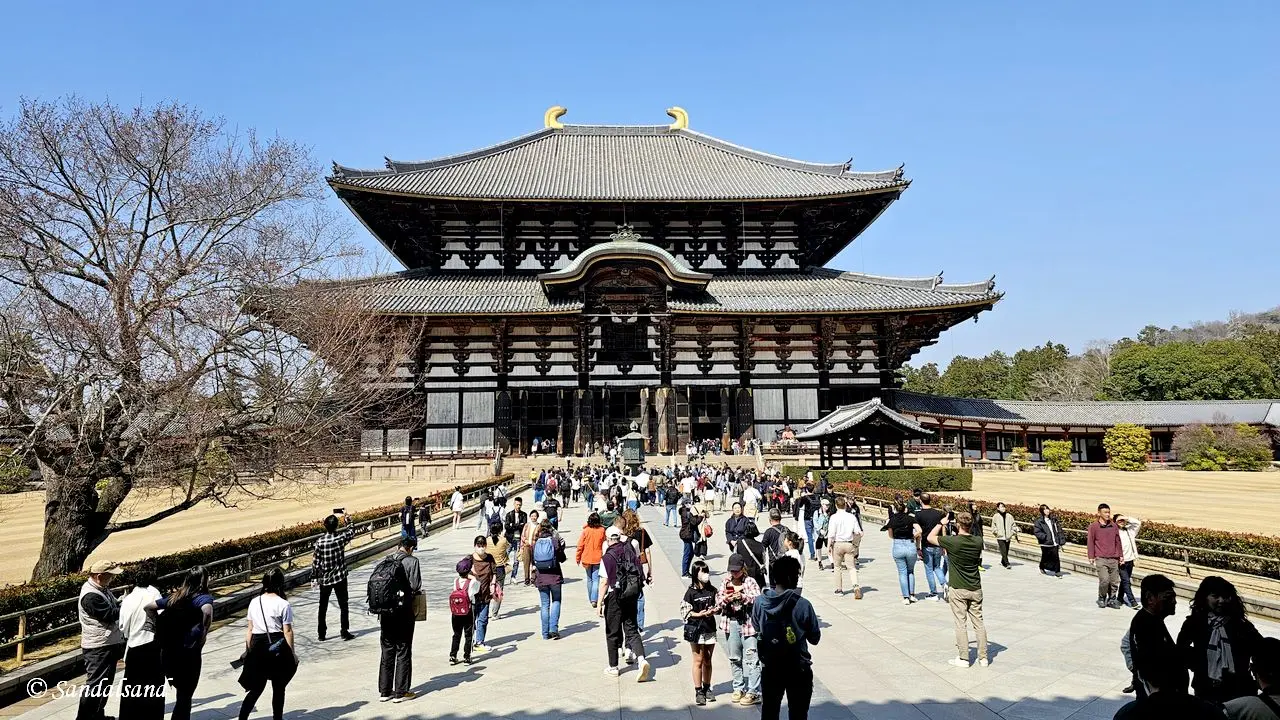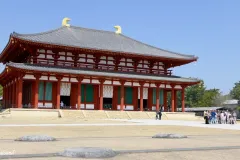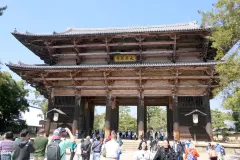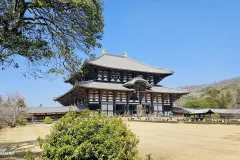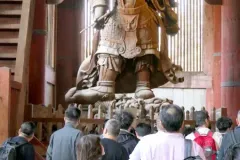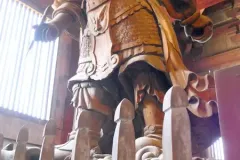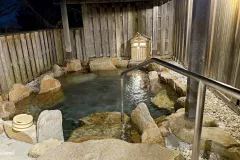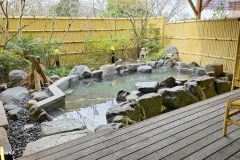In Nara, sacred temples and roaming deer reflect timeless harmony. This ancient capital preserves Japan’s spiritual and cultural foundations.
The UNESCO World Heritage List includes over a thousand properties. They have outstanding universal value and are all part of the world’s cultural and natural heritage.
Official facts
- Official title: Historic Monuments of Ancient Nara
- Country: Japan
- Date of Inscription: 1998
- Category: Cultural
UNESCO’s World Heritage Centre’s short description of site no. 870:
Nara was the capital of Japan from 710 to 784. During this period the framework of national government was consolidated and Nara enjoyed great prosperity, emerging as the fountainhead of Japanese culture. The city’s historic monuments – Buddhist temples, Shinto shrines and the excavated remains of the great Imperial Palace – provide a vivid picture of life in the Japanese capital in the 8th century, a period of profound political and cultural change.
There is more to know about Nara
Ancient Nara: Cradle of Japanese Civilisation
Ancient Nara, Japan’s first permanent capital (710–784), holds immense cultural, spiritual, and historical significance as the birthplace of the Japanese state. Designated a UNESCO World Heritage Site in 1998 under the name Historic Monuments of Ancient Nara, the city preserves a remarkable concentration of cultural treasures that shaped early Japan’s political structure, religious institutions, and artistic expression.
The Birth of a Nation
Nara became the political and cultural heart of the country during the Nara period, when a centralised government modelled after China’s Tang dynasty was established. Buddhism, newly introduced from the mainland, flourished under imperial patronage and deeply influenced the era’s architecture, art, and philosophy. Many of Nara’s ancient temples, shrines, and archaeological sites have survived for over a millennium, offering a direct link to this formative age.
The World Heritage Monuments
The World Heritage Site includes eight components:
- Tōdai-ji, home to the Great Buddha (Daibutsu) and one of the world’s largest wooden buildings
- Kōfuku-ji, a powerful temple affiliated with the influential Fujiwara clan
- Kasuga Taisha, a grand Shinto shrine known for its bronze and stone lanterns
- Gangō-ji, one of Japan’s earliest Buddhist temples
- Yakushi-ji and Tōshōdai-ji, representing different schools of Buddhism
- Heijō Palace Ruins, offering insight into the city’s ancient court life
- Kasugayama Primeval Forest, an untouched sacred forest reflecting spiritual harmony with nature
Living Legacy
Today, Nara continues to embody Japan’s spiritual heritage and aesthetic values. The city’s serene atmosphere, wandering deer in Nara Park, and preservation of ancient customs attract millions of visitors annually. More than a historical relic, Nara remains a place of living culture, where the foundations of Japanese identity—Buddhism, Shintoism, and imperial governance—are still visible, fostering national pride and continued reverence.
My visit
Arriving in Nara on a train from Kyoto I had this fear of becoming “templed out”. This is the feeling of being overwhelmed or fatigued by visiting numerous temples, especially during travel. It’s common when visiting areas with a high concentration of religious or historical sites, like Kyoto or Angkor Wat. Essentially, it means you’ve seen so many temples that they start to blend together and you can no longer appreciate their individual significance or beauty.
I still remember how I went almost berserk several years ago in Angkor with the objective of seeing (almost) all temples in this large area in northern Cambodia. A few years later I went to Bagan, Myanmar, which left me satisfied but also with a sense of fatigue.
This time I was even travelling with family, and we had just spent a few days in Kyoto, a city with numerous temples of high importance to locals and foreign visitors alike. Before travelling to Japan I had pinpointed on a map quite a few interesting sights in Nara and drawn lines between them as suggestions of possible walking routes. As it turned out, we decided to calm down and enjoy the nice, early spring weather, and the tranquillity of Nara. We went to see two of the eight places in Nara listed by UNESCO.
First impressions
At the station we found lockers for our luggage and went into the street. Compared to Kyoto the atmosphere was quiet and non-congested. There is a long pedestrian street, Sanjo Dori Street, leading in a straight line into the main temple area. We took our time and realised that this was a great way to enter the highlights.
The street culminates (for us at least) at the Sarusawa Pond and the start of a series of parks. Next to the park we entered the large compound with the Kōfuku-ji temple. The family temple of the Fujiwara clan has golden halls, octagonal halls, and pagodas. The Fujiwara clan was a powerful Japanese aristocratic family that dominated the imperial court for centuries, particularly during the Nara and Heian periods. They achieved this dominance not by directly claiming the throne, but by serving as chief advisors, regents, and through strategic marriages into the imperial family.
Shortly after we passed by groups of deer. They come in large numbers throughout the parks and are tame. They are easy to touch and seem to love the crackers that are sold from stalls in the parks.
The highlight
We continued past the large buildings housing the Nara National Museum and found another pond and more deer. At the end there is what I would reckon to be the largest wooden portal I have ever seen. This is the Tōdai-ji Namdaimon (Grand South Gate). Its grandness befits what it is the entrance to, namely Tōdai-ji, the world’s largest wooden structure until 1998.
The Tōdai-ji Buddhist temple is immense in appearance, especially from the outside. The large Buddha and other statues inside are impressive, but it was the huge dimension of the building itself that hit me the most.
The rest
And that was it. Almost. After the monumental Tōdai-ji temple we did not feel very eager to explore more or smaller temples in Nara, and it was time for lunch. As always in Japan, it is a wonderful experience.
We were on a 14-day tour of Japan, and had booked a ryokan here in Nara.
A ryokan is a traditional Japanese inn, offering a unique cultural experience beyond simple accommodation. They are known for their distinctive features like tatami mat rooms, futon beds, Japanese-style baths, and delicious local cuisine.
So in the afternoon we went into the hills above Nara for some splendid meals, a good night on futon beds and soaking, hot baths in open air. My recommendation goes to the Mikasa Ryokan. Late in the evening, get a drink and sit down in one of the deep chairs to enjoy the view over Nara.
Conclusion
We thus avoided getting that templed-out feeling in Nara. With the ryokan on top of a relaxing day we could hardly have achieved more. In reality, Nara is a quieter place, and less crowded than Kyoto. It is only a short train ride away, so if you have the time on a tight itinerary, head for Nara.
Read more
The images and text in this article are from my visit to Nara in 2025. Find more articles from Japan on Sandalsand.

